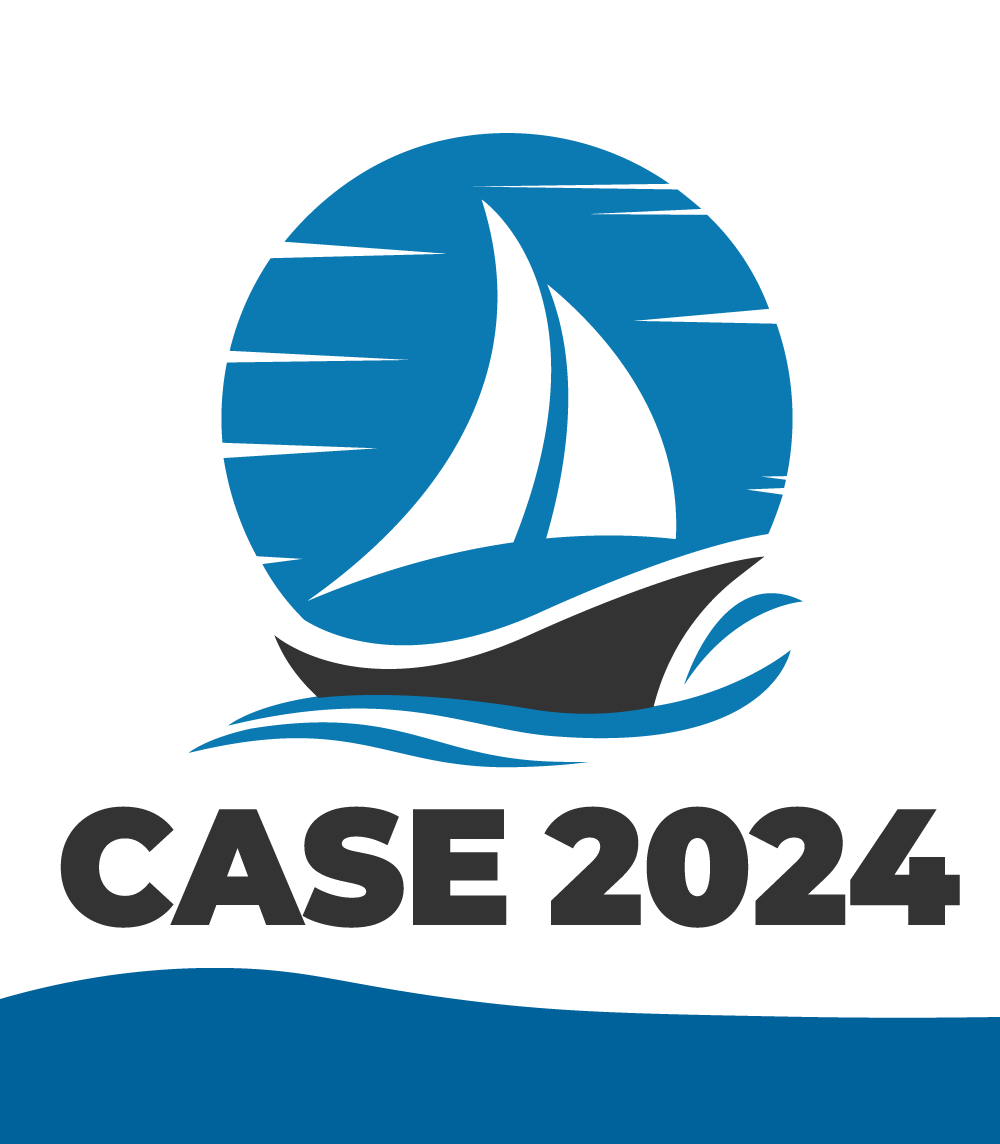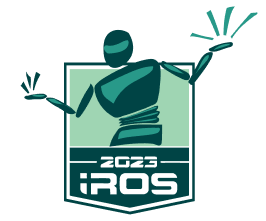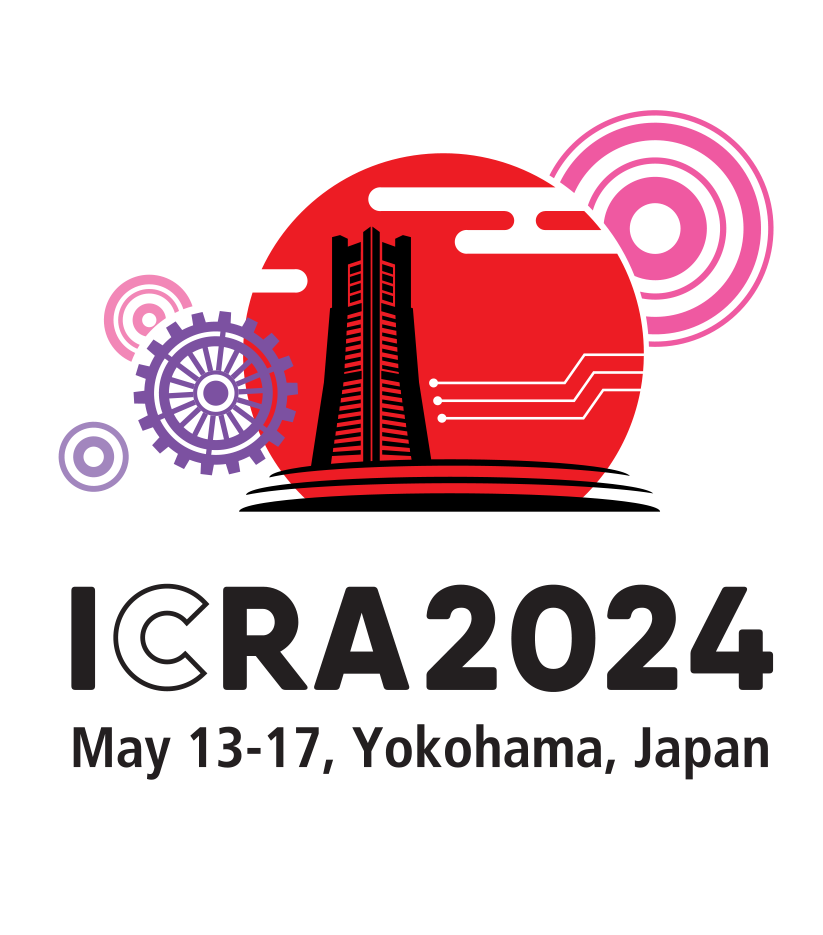IEEE Transactions on Robotics (T-RO)
Authors of an IEEE Transactions on Robotics (T-RO) regular paper (not evolved papers, survey papers, or communication items) are given the opportunity to present their paper at one upcoming conference of the IEEE Robotics and Automation Society (RAS). A paper is eligible to be presented at one of the following conferences provided the paper is transferred during the associated time window, which closes at least a month before the Steering Committee meeting of the conference:
- ICRA@40: September 1, 2023 to May 31, 2024
- ICRA 2024: March 1, 2023 to November 30, 2023
- IROS 2024: August 1, 2023 to April 30, 2024
- CASE 2024: August 1, 2023 to April 30, 2024
- Humanoids 2024: December 1, 2023 to August 31, 2024
The paper must be transferred within 270 days of acceptance. Authors may not request any acceleration or delay of the review process based on these time windows.
The invitation to present at a conference is in the author's workspace in PaperCept after acceptance of the paper. Eligible papers may only be presented at one conference. Visit here for T-RO papers presented at conferences.
The IEEE Transactions on Robotics (T-RO) publishes research papers that represent major advances in the state-of-the-art in all areas of robotics. The Transactions welcomes original papers that report on any combination of theory, design, experimental studies, analysis, algorithms, and integration and application case studies involving all aspects of robotics. You can learn more about T-RO's scope, paper length policy, open access option, and preparation of papers for submission at the Information for Authors page.
As of late May 2020, T-RO no longer has a "short paper" category for new submissions. Papers that are short may still be published, but they are treated as Regular paper submissions, and they are subject to the same standards for significance. Authors of short papers (8 pages or fewer) may consider our sister journal, the IEEE Robotics and Automation Letters (RA-L).
Articles
Table of Contents of the latest T-RO issue (IEEE Xplore)
Early Access Articles
Most Downloaded Articles
Special Collections
Joining the Transactions on Robotics Editorial Board
The IEEE Transactions on Robotics (T-RO) is always looking for new Associate Editors. To be eligible to serve as AE for T-RO, you must (1) have previously published in the IEEE Transactions on Robotics, (2) have previously served in some other editorial board position (e.g., the IEEE Robotics and Automation Letters, ICRA, IROS, etc.), and (3) be in a "permanent" position (e.g., not a student or a postdoc). To self-nominate, please fill out this form.
Presenting Your Transactions on Robotics Paper at ICRA, IROS, and CASE
Any IEEE Transactions on Robotics (T-RO) paper, other than communication items and survey papers, may be presented at either an upcoming IEEE International Conference on Robotics and Automation (ICRA), an upcoming IEEE/RSJ International Conference on Intelligent Robots and Systems (IROS), or International Conference On Automation Science and Engineering (CASE), provided most of the key ideas of the paper have never appeared at a conference with a published proceedings (i.e., the paper is a "new" paper and not the evolved version of a previous conference paper or papers). For conference eligibility deadlines, see the RAS conference dates in the blue box above.
Authors may not request any acceleration or delay of the review process based on these criteria.
Upon final notification of acceptance, eligible papers will be offered an option to present at conference in the author's workspace within the PaperCept platform. The prompt within the workspace will include an option to transfer the paper directly to conference organizers. Authors will have a window of one month to select and accept which conference they will present at. Authors are expected to pay the conference fee. Eligible papers may only be presented at one conference.
Background
Historically papers in the Transactions on Robotics have been either "evolutionary" papers (papers extended, with new results, from previously presented conference papers by the same authors) or "new" direct-to-journal papers (papers that are not evolved from conference papers). Since the introduction of the Robotics and Automation Letters (RA-L), the robotics community has demonstrated strong support for direct-to-journal papers (maximum of eight pages) with the possibility of presentation at a conference.
This IEEE RAS policy, adopted by AdCom in September 2017 and formalizing pilots of the policy at ICRA 2017 and 2018, provides a conference presentation option for "new" direct-to-journal T-RO papers. Authors are no longer forced to write two versions of the paper (a short one for conference presentation and a longer one for the "final" journal version) if they want the work both to be presented at a conference and to appear in a journal. This saves on author and reviewer effort, eliminates the confusion over which paper to cite, and reduces the stress on authors and reviewers arising due to submission deadlines for ICRA, IROS, or CASE. The new policy gives a new benefit to T-RO authors and brings high-quality T-RO papers to ICRA, IROS, or CASE without harming the traditional evolutionary model.
Is My Paper "Evolved" or "New?"
This initiative distinguishes between papers that have evolved directly from conference papers ("evolved" papers) and papers that have not ("new" direct-to-journal papers). Of course the distinction is not always clear-cut, since almost all of one's research has evolved in some way from one's previous papers.
Below are some criteria to consider in the judgment of whether a paper is evolved or new. If the answer to one or more of these questions is "yes," this is a good sign that your paper should be considered to be evolved.
- Does the journal paper have the same title as the previous conference paper?
- Is there a direct lineage from the conference paper(s) to the journal paper?
- Typically a paper has one or a small number of key new ideas. (There may be many supporting details.) Does a majority of the key ideas in the T-RO paper appear in the previous conference paper(s)?
- Would the T-RO paper have been rejected without the content of the previous conference paper(s)?
- Does the T-RO paper use a significant amount of text, results, data, or figures from the previous conference paper(s)?
An advantage of having your paper be considered "evolved" is that you are free to incorporate much of the material from your conference paper(s) without penalty in the review process, provided the new paper provides a significant contribution beyond the conference paper(s) (see the guidance here for more details). The disadvantage is that your "evolved" paper is not eligible for presentation at ICRA, IROS, or CASE. The disadvantage of declaring your paper "new" is that you cannot reuse significant portions of the material from your conference paper(s), but the advantage is that the new paper (if accepted) is eligible for presentation at ICRA, IROS, or CASE.
Note that no submission can be considered to be "evolved" from a paper that previously appeared in a journal (including the IEEE Robotics and Automation Letters).
If you are in doubt, send your brief analysis along with the T-RO paper and the relevant conference paper(s) to the Editor-in-Chief for an evaluation. It is unethical to withhold relevant previous conference paper(s) in this analysis.
IEEE Transactions on Robotics King-Sun Fu Memorial Best Paper Award
2022: "Kimera-Multi: Robust, Distributed, Dense Metric-Semantic SLAM for Multi-Robot Systems"
by Yulun Tian; Yun Chang; Fernando Herrera Arias; Carlos Nieto-Granda; Jonathan P. How; Luca Carlone
vol. 38, no. 4, pp. 2022-2038, August 2022, [Xplore Link]
"Stabilization of Complementarity Systems via Contact-Aware Controllers" [Xplore Link]
"Autonomous Cave Surveying With an Aerial Robot" [Xplore Link]
"Prehensile Manipulation Planning: Modeling, Algorithms and Implementation" [Xplore Link]
"Rock-and-Walk Manipulation: Object Locomotion by Passive Rolling Dynamics and Periodic Active Control" [Xplore Link]
"Origami-Inspired Soft Actuators for Stimulus Perception and Crawling Robot Applications" [Xplore Link]
2021: "Collision Resilient Insect-scale Soft-actuated Aerial Robots With High Agility"
by YuFeng Chen; Siyi Xu; Zhijian Ren; Pakpong Chirarattananon
vol. 37, no. 5, pp. 1752-1764, October 2021, [Xplore Link]
"A Backdrivable Kinematically Redundant (6+3)-dof Hybrid Parallel Robot for Intuitive Sensorless Physical Human-Robot Interaction" [Xplore Link]
"Stochastic Dynamic Games in Belief Space" [Xplore Link]
"ORB-SLAM3: An Accurate Open-Source Library for Visual, Visual-Inertial and Multi-Map SLAM" [Xplore Link]
"Active Interaction Force Control for Contact-Based Inspection with a Fully Actuated Aerial Vehicle" [Xplore Link]
"Distributed Certifiably Correct Pose-Graph Optimization" [Xplore Link]
2020: "TossingBot: Learning to Throw Arbitrary Objects With Residual Physics"
by Andy Zeng; Shuran Song; Johnny Lee; Alberto Rodriguez; Thomas Funkhouser
vol. 36, no. 4, pp. 1307-1319, August 2020, [Xplore Link]
"Design and Validation of a Powered Knee-Ankle Prosthesis With High-Torque, Low-Impedance Actuators" [Xplore Link]
"Quantifying Hypothesis Space Misspecification in Learning From Human-Robot Demonstrations and Physical Corrections" [Xplore Link]
"Teach-Repeat-Replan: A Complete and Robust System for Aggressive Flight in Complex Environments" [Xplore Link]
"Deep Drone Racing: From Simulation to Reality With Domain Randomization" [Xplore Link]
2019: "Active Learning of Dynamics for Data-Driven Control Using Koopman Operators"
by Ian Abraham and Todd D. Murphey
vol. 35, no. 5, pp. 1071-1083, October 2019, [Xplore Link]
2018: "Grasping Without Squeezing: Design and Modeling of Shear-Activated Grippers"
by Elliot Wright Hawkes, Hao Jiang, David L. Christensen, Amy K. Han, and Mark R. Cutkosky
vol. 34, no. 2, pp. 303-316, April 2018, [Xplore Link]
"Exploiting Elastic Energy Storage for “Blind” Cyclic Manipulation: Modeling, Stability Analysis, Control, and Experiments for Dribbling" [Xplore Link]
"VINS-Mono: A Robust and Versatile Monocular Visual-Inertial State Estimator" [Xplore Link]
2017: "On-Manifold Preintegration for Real-Time Visual-Inertial Odometry"
by Christian Forster, Luca Carlone, Frank Dellaert, and Davide Scaramuzza
vol. 33, no. 1, pp. 1-21, February 2017, [Xplore Link]
2016: "Rapidly Exploring Random Cycles: Persistent Estimation of Spatiotemporal Fields With Multiple Sensing Robots"
by Xiaodong Lan and Mac Schwager
vol. 32, no. 5, pp. 1230-1244, October 2016, [Xplore Link]
2015: "ORB-SLAM: A Versatile and Accurate Monocular SLAM System"
by Raul Mur-Artal, J. M. M. Montiel and Juan D. Tardos
vol. 31, no. 5, pp. 1147-1163, 2015 [Xplore Link].
2014: "Catching Objects in Flight"
by Seungsu Kim, Ashwini Shukla, Aude Billard
vol. 30, no. 5, pp. 1049-1065, 2014 [Xplore Link].
2013: "Robots Driven by Compliant Actuators: Optimal Control under Actuation Constraints"
by David J. Braun, Florian Petit, Felix Huber, Sami Haddadin, Patrick van der Smagt, Alin Albu-Schäffer, Sethu Vijayakumar
vol. 29, no. 5, pp. 1085-1101, 2013 [Xplore Link].
2012: "Reinforcement Learning With Sequences of Motion Primitives for Robust Manipulation"
by Freek Stulp, Evangelos A. Theodorou, Stefan Schaal
vol. 28, no. 6, pp. 1360-1370, 2012 [Xplore Link].
2011: "Human-Like Adaptation of Force and Impedance in Stable and Unstable Interactions"
by Chenguang Yang, Gowrishankar Ganesh, Sami Haddadin, Sven Parusel, Alin Albu-Schaeffer, Etienne Burdet
vol. 27, no. 5, pp. 918-930, 2011 [Xplore Link].
2010: "Design and Control of Concentric-Tube Robots"
by Pierre E. Dupont, Jesse Lock, Brandon Itkowitz, Evan Butler
vol. 26, no. 2, pp. 209-225, 2010 [Xplore Link].
2009: "Vision-Aided Inertial Navigation for Spacecraft Entry, Descent, and Landing"
by Anastasios I. Mourikis, Nikolas Trawny, Stergios I. Roumeliotis, Andrew E. Johnson, Adnan Ansar, Larry Matthies
vol. 25, no, 2, pp. 264-280, 2009 [Xplore Link].
2008: "Smooth Vertical Surface Climbing with Directional Adhesion"
by Sangbae Kim, Matthew Spenko, Salomon Trujillo, Barrett Heyneman, Daniel Santos, Mark R. Cutkosky
vol. 24, no. 1, pp. 65-74, 2008 [Xplore Link].
2007: "Manipulation Planning for Deformable Linear Objects"
by Mitul Saha, Pekka Isto
vol. 23, no. 6, pp. 1141-1150, 2007 [Xplore Link].
2006: "Exactly Sparse Delayed-State Filters for View-Based SLAM"
by Ryan M. Eustice, Hanumant Singh, John J. Leonard
vol. 22, no. 6, pp. 1100-1114, 2006 [Xplore Link].
2005: "Active Filtering of Physiological Motion in Robotized Surgery Using Predictive Control"
by Romuald Ginhoux, Jacques Gangloff, Michel de Mathelin,Luc Soler, Mara M. Arenas Sanchez, Jacques Marescaux
vol. 21, no. 1, pp. 67-79, 2005 [Xplore Link].
2004: "Reactive Path Deformation for Nonholonomic Mobile Robots"
by Florent Lamiraux, David Bonnafous, Olivier Lefebvre
vol. 20, no. 6, pp. 967-977, 2004 [Xplore Link].







